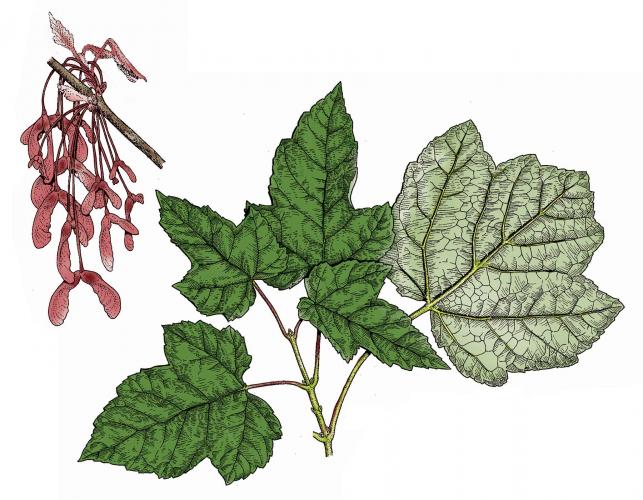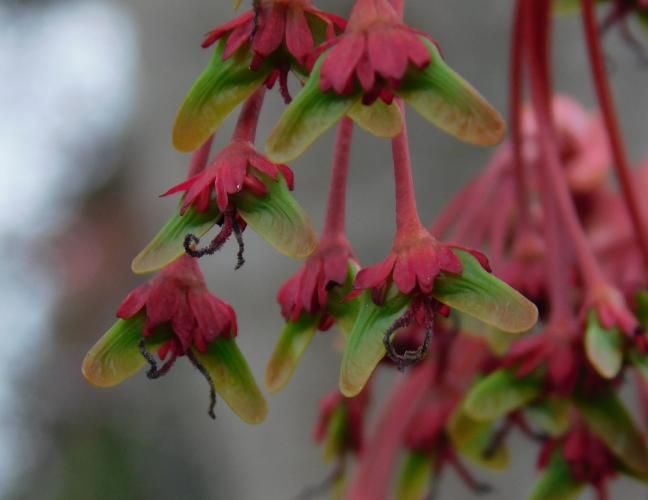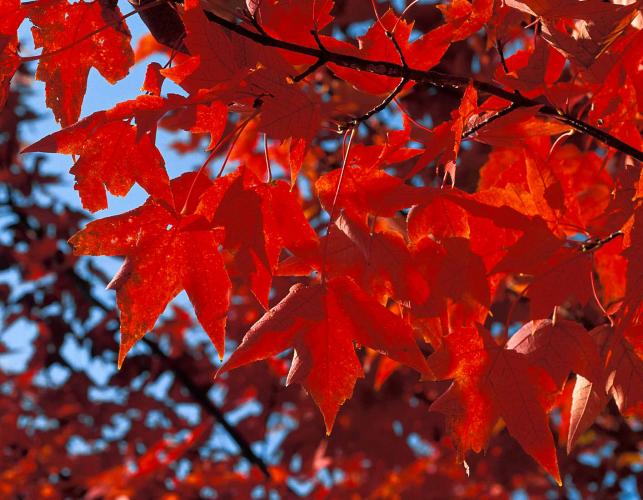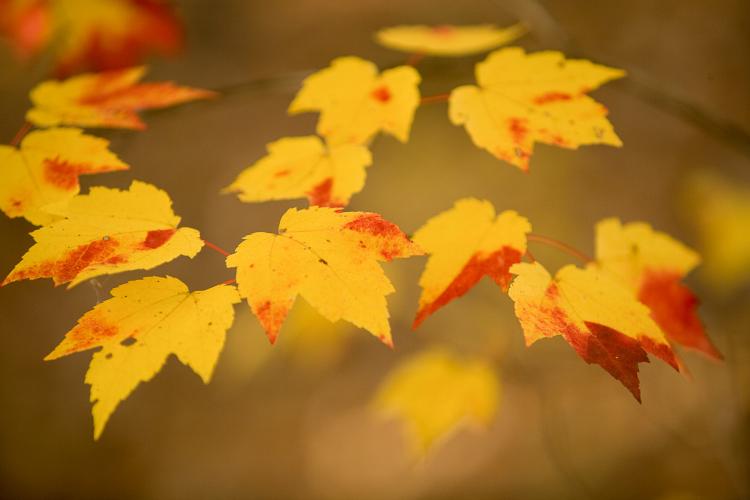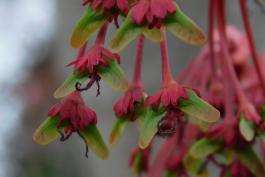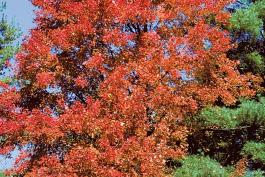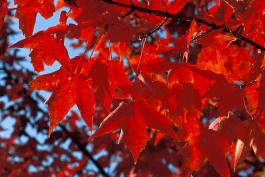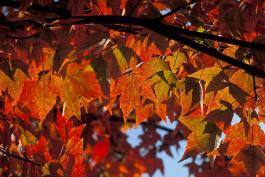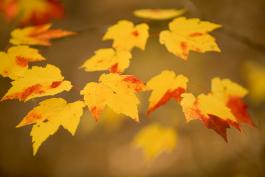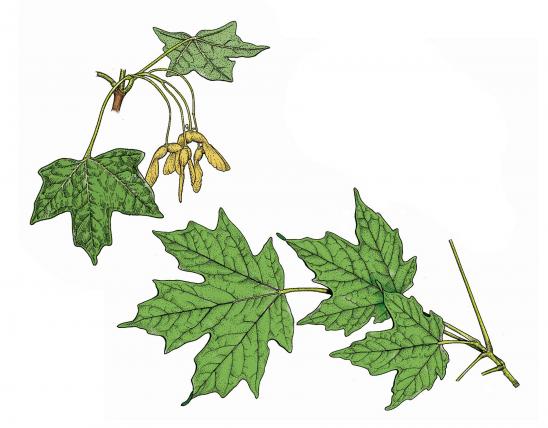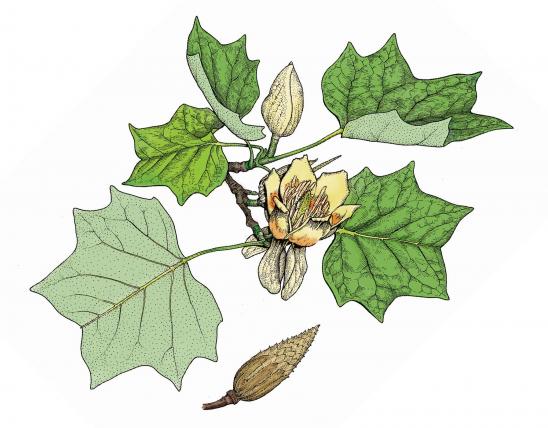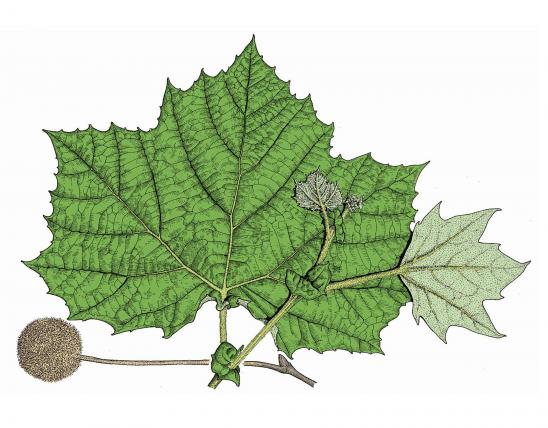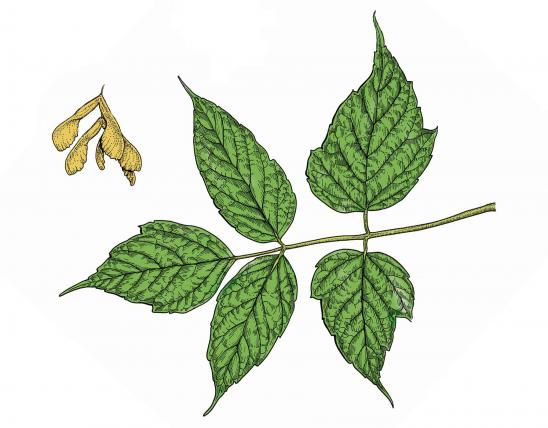
Red maple is a small to medium tree with a long, clear trunk and a narrow, irregular crown.
Leaves are opposite, simple, 2–5 inches long, with 3 or 5 lobes; middle lobe is longer than side lobes; base of lobes is V-shaped; lower surface whitish, margins toothed.
Bark is light gray and smooth at first, becoming darker, furrowed, and flaky on older trees.
Twigs are slender, smooth, reddish, and shiny, with pale pores; bud tip is blunt.
Flowering: March–April; red, with 4 or 5 small petals.
Fruits are red, in winged pairs, appearing May–June.
Varieties: Drummond's red maple (Acer rubrum var. drummondii) has the lower surface of leaves densely hairy and whitish; it lives mainly in bottomland forests in the Bootheel and along sinkhole ponds in the southeastern Ozarks. Also, there are many horticultural varieties and crosses of red maple found in nurseries and in planted landscapes; most were developed for brilliant fall color.
Height: to 60 feet.
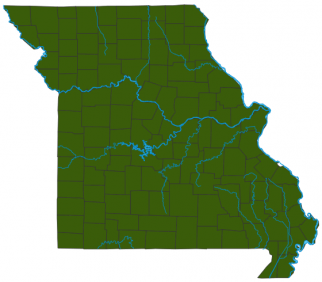
Scattered to common in the Ozark, Ozark Border, and Mississippi Lowlands natural divisions; cultivated statewide.
Habitat and Conservation
Occurs naturally in bottomland forests, edges of streams, swamps and sinkhole ponds, moist to dry upland forests, and along bluffs. Drummond's red maple, of southeastern Missouri, prefers the wetter locations, while Acer rubrum var. rubrum is most common in the Ozark uplands. Easy to transplant and tolerant of many soil conditions, red maple is a favorite of landscapers. It is widely used in street plantings.
Human Connections
Red maple is most often planted for its spectacular orange and red fall color and is a mainstay in the nursery trade. Because it beautifies countrysides and cityscapes, its presence helps tourism. Cultivated since 1656, red maple is also used a great deal for its wood.
Donald Culross Peattie, who so beautifully described America's trees, wrote, "At all seasons of year the Red Maple has something red about it. In winter the buds are red, growing a brilliant scarlet as winter ends." They are so red, he pointed out, that even from an airplane, "one can pick out . . . the Red Maples, by the promise of spring in their tops. . . . The flowers too . . . stand out brilliantly because they bloom upon the naked wood before ever the leaves appear. . . . Even in summer the leafstalks are very red."
Ecosystem Connections
Birds and rodents eat the seeds. Trees provide homes for many animals: insects live upon their leaves, birds build nests in their boughs, snakes hide and bees nest in their hollow limbs, and spiders and other insects live on the bark. After trees fall, other animals move in.
Red maple is one of our earliest spring flowers. It may start blooming on warm days in February. Squirrels nip off the buds and flowers and lick the sweet sap that oozes out of the twigs.
